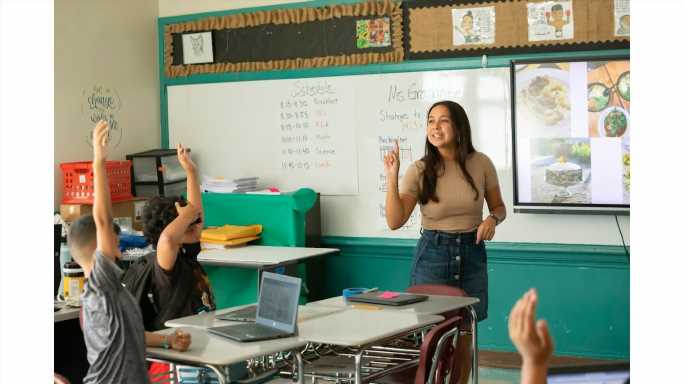
Poorest School District in Every State
September 7, 2022Disparities in school spending have been a point of contention in the American public education system for decades. Because public schools typically receive the bulk of their funding from local sources such as property taxes, wealthy districts are often better funded than poorer ones.
While studies have shown that higher per pupil spending can improve student outcomes, there are countless other factors – both inside the classroom and outside of it – that can impact a student’s likelihood of success. One of them is financial security at home.
For students from low-income families, setbacks can be more difficult to recover from due to limited supporting resources. A recent report published by the Georgetown Center on Education and the Workforce found that children from well-off families who score poorly on standardized aptitude tests in kindergarten have a 7 in 10 chance of graduating from college and landing a good entry-level job as a young adult. Meanwhile, children from low-income households who score well on the same tests have only a 3 in 10 chance. (Here is a look at the worst school district in each state.)
This study suggests that even if per-pupil spending were equal across the thousands of school districts in the United States, students in low-income areas would still have a considerable disadvantage. Using data from the U.S. Census Bureau and National Center for Education Statistics, 24/7 Wall St. identified the poorest school districts in each state. School districts are ranked by average household income in the district, and only districts with at least 100 students and income data were considered.
Among the districts on this list, average annual household income ranges from about $28,000 to $67,300. The one exception is Hawaii, where all public schools fall under a single district. In the majority of the school districts on this list, graduation rates are below 90%, and in 15, they are 75% or less.
Despite being in lower-income areas with a weaker tax base, most of these schools spend more on a per-pupil basis than the statewide average. This is due in large part to federal and state subsidies, including free lunch programs, that help equalize school funding. Additionally, many of the school districts on this list have a higher concentration of students with specialized needs. For example, in about half of the districts on this list, 20% or more of the students are English language learners or enrolled in an individualized education program. (Here is a look at how much each state spends on its public schools.)
Click here to see the poorest school district in every state.
Click here to see our detailed methodology.
Sponsored: Find a Qualified Financial Advisor
Finding a qualified financial advisor doesn’t have to be hard. SmartAsset’s free tool matches you with up to 3 fiduciary financial advisors in your area in 5 minutes. Each advisor has been vetted by SmartAsset and is held to a fiduciary standard to act in your best interests. If you’re ready to be matched with local advisors that can help you achieve your financial goals, get started now.
Source: Read Full Article


